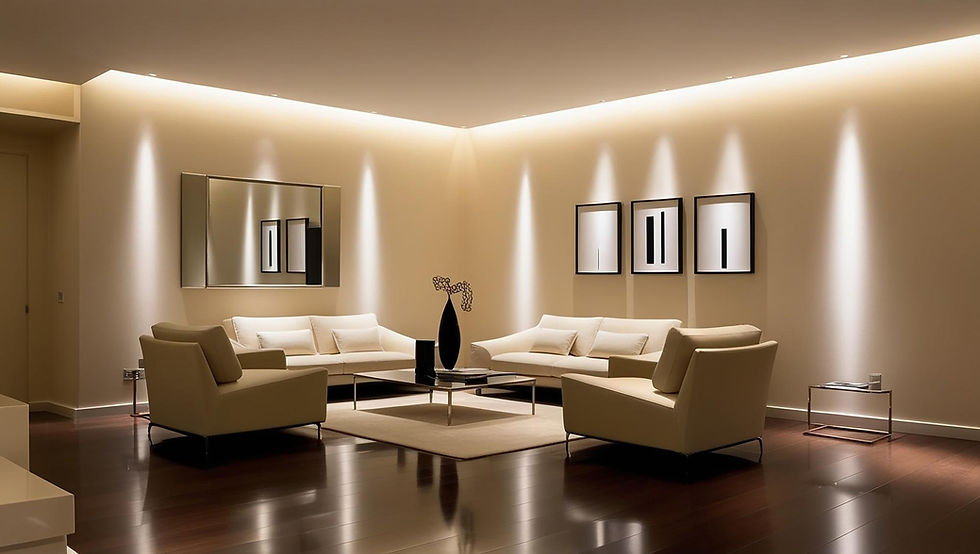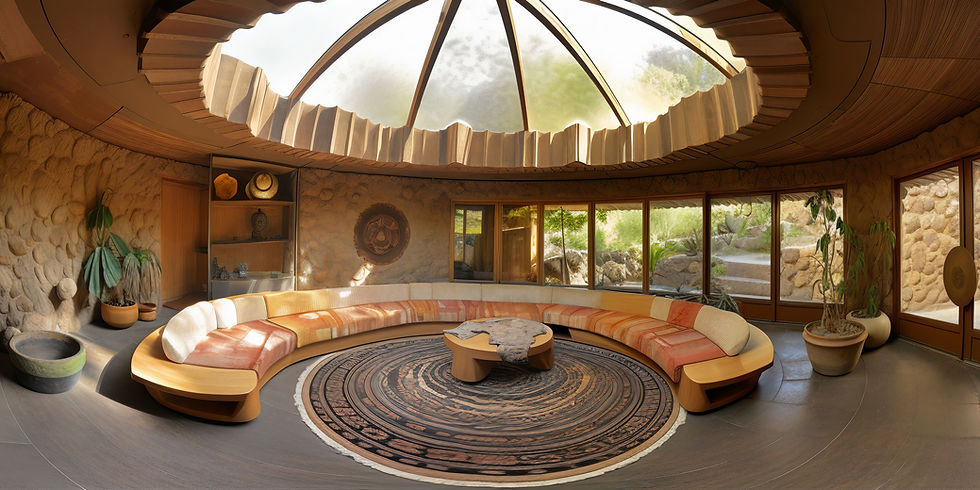Lighting That Feels: How Indirect Illumination Shapes Emotion in a Room
- Insync Marketing
- Aug 1
- 3 min read

Light Doesn’t Just Illuminate - It Communicates
Ever walked into a room and felt instantly calm? Or entered another and felt inexplicably alert, even a little tense? It wasn’t just the color of the walls or the choice of furniture - it was the lighting.
More specifically: the indirect lighting.
In the world of interior design, light is emotion. And indirect illumination - the kind that’s soft, ambient, and diffused - has the unique ability to shape how we feel within a space. It’s not just about visibility. It’s about atmosphere, depth, and mood.
What is Indirect Lighting, Really?
Indirect lighting refers to any light source that doesn’t shine directly into your eyes. Instead, it reflects off ceilings, walls, floors, or surfaces to create a soft, even glow.
Think:
Cove lighting hidden behind ceiling panels
LED strips under floating shelves
Floor lamps bouncing light off a wall
Backlit mirrors or headboards
This type of lighting is subtle yet powerful, working quietly in the background to influence how a room feels.
Why Indirect Lighting Matters in Interior Design
1. Creates a Calm and Welcoming Atmosphere
Harsh downlights can feel clinical. Indirect lighting, on the other hand, wraps the room in a warm hug.
Perfect for:
Living rooms
Bedrooms
Spa-like bathrooms It eases the eye, softens shadows, and reduces glare - making your space feel instantly more relaxing.
Design Tip: Use dimmable LED strips behind headboards or below floating TV consoles for a hotel-like feel at home.
2. Adds Depth and Dimension
Good design isn’t flat - it has layers. And indirect lighting helps build those layers.
By illuminating edges, recesses, and corners, it:
Highlights architectural details
Makes rooms appear larger
Adds a sense of movement and flow
Design Tip: Install concealed cove lights in false ceilings to create a floating effect and visual drama.
3. Supports Emotional Zoning
Every room has zones - places to rest, work, dine, or gather. Indirect lighting helps emotionally separate those zones without the need for walls.
Example:
A backlit bookshelf can define a cozy reading nook
Soft toe-kick lighting can guide the way in dark corridors
A glowing wall behind the dining area can create an intimate dinner setting
Design Tip: Use smart lighting systems to set different moods for different zones with just one click.
The Science Behind the Feeling
Cool white = Alertness Warm yellow = Relaxation Soft gradients = Comfort and continuity
Our brains are wired to respond emotionally to light. Soft, indirect illumination mimics natural light patterns, reducing stress and creating a sense of well-being. It’s no coincidence that spas, art galleries, and luxury hotels all lean heavily into indirect lighting - they’re designed to make you feel something.
How to Use Indirect Lighting in Your Home
Living Room: LED backlighting behind your TV or floating panel adds cinematic glow.
Bedroom: Cove lights above the bed soften the room for a peaceful wind-down.
Bathroom: Backlit mirrors add elegance and reduce harsh shadows.
Kitchen: Under-cabinet lights illuminate counters without glare.
Bonus Tip: Combine indirect lighting with candles or small accent lamps for the perfect evening mood.
Final Thought: Design with Feeling, Not Just Function
We often talk about textures, palettes, and materials - but lighting? That’s the invisible force that ties it all together.
Indirect lighting isn’t loud. It whispers. It doesn’t just help you see the room - it helps you feel it.
At Dzyine, We Design with Light in Mind
Whether it's a show flat, a luxury residence, or a commercial space, we understand the emotional impact of illumination. We don’t just place lights - we craft experiences with them.



